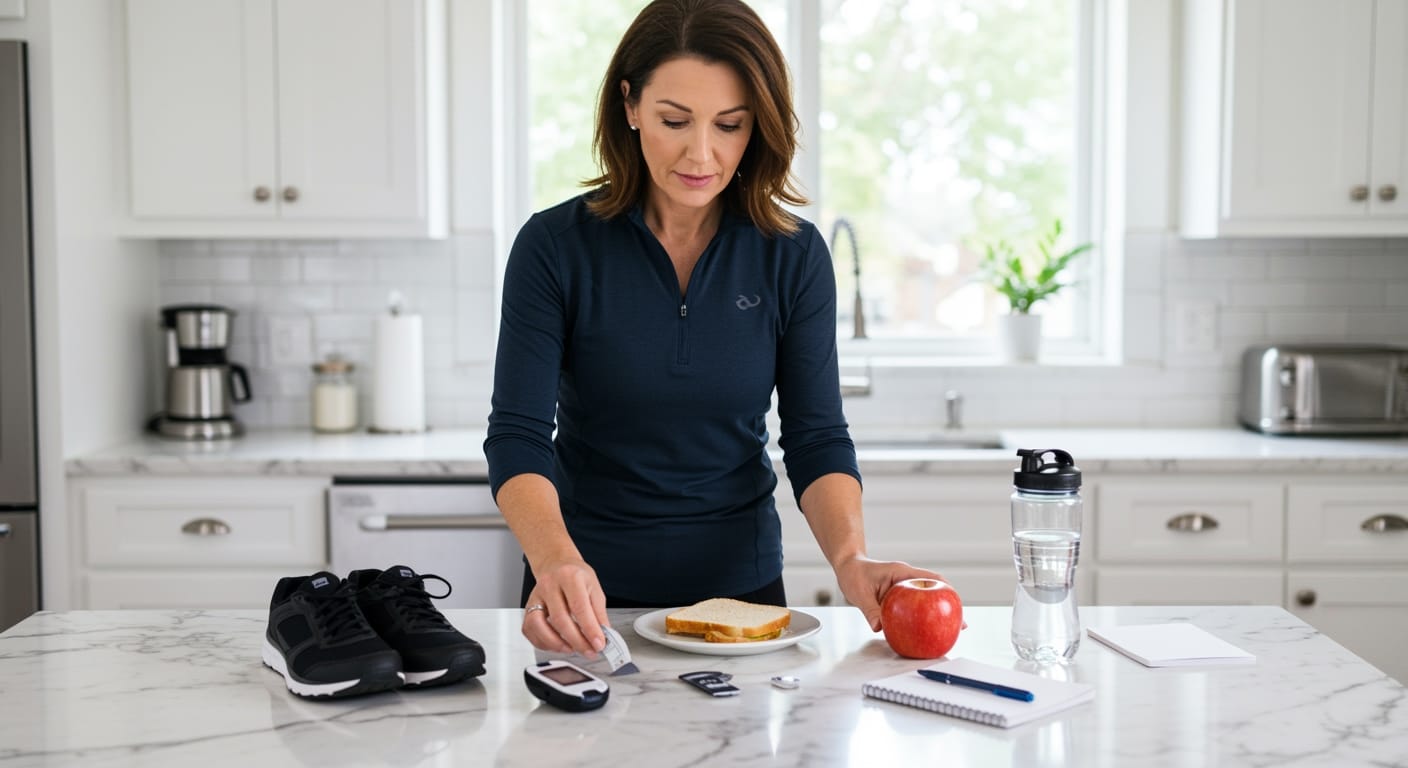✪ Key Takeaway: Light exercise 30-60 minutes after meals can lower blood sugar by 20-30%, but timing and intensity matter more than duration.
Introduction
Your blood sugar spikes after every meal, and you wonder if a quick walk will fix everything.
You might be asking this question because your doctor mentioned exercise for blood sugar control, or maybe you noticed feeling better after moving around post-meal.
Hi, I’m Abdur, your nutrition coach, and today I’m going to explain exactly how exercise after meals affects your blood sugar, when it works best, and what mistakes to avoid.
What Actually Happens When You Exercise After Eating?
Your body goes through a complex process when you eat and then exercise.
After eating, your blood glucose rises as food breaks down into sugar molecules.
Your pancreas releases insulin to help cells absorb this glucose for energy.
When you start moving, your muscles become glucose-hungry and begin pulling sugar from your bloodstream.
This muscle activity creates a second pathway for glucose uptake that works independently of insulin.
The result is faster blood sugar clearance and lower peak glucose levels compared to sitting still after meals.
Research shows this effect can reduce post-meal blood sugar spikes by 20-30% in both healthy people and those with diabetes.
✪ Fun Fact: Your muscles can absorb glucose without insulin during exercise, making it a powerful tool for blood sugar management.
When Should You Exercise After Meals for Best Results?
Timing makes the difference between effective blood sugar control and wasted effort.
The optimal window for post-meal exercise is 30-60 minutes after eating.
This timing catches your blood sugar as it begins to rise but before it peaks.
Exercising immediately after eating can cause digestive discomfort because blood flow diverts from your stomach to your muscles.
Waiting too long means you miss the glucose spike entirely, reducing the exercise benefit.
Studies show that even a 15-minute walk starting 30 minutes post-meal can significantly blunt glucose peaks.
For people with diabetes, this timing strategy can prevent dangerous blood sugar swings throughout the day.
✪ Pro Tip: Set a phone reminder for 30 minutes after meals to establish consistent post-meal exercise timing.
What Type of Exercise Works Best for Blood Sugar Control?
Not all exercise creates the same blood sugar benefits after meals.
Light to moderate intensity activities work better than high-intensity exercise for post-meal glucose control.
Walking at a comfortable pace tops the list because it activates large muscle groups without overwhelming your digestive system.
Gentle cycling, light stretching, or casual swimming also provide excellent glucose-lowering effects.
High-intensity exercise can actually raise blood sugar temporarily due to stress hormone release.
The key is sustained, rhythmic movement that keeps your muscles actively consuming glucose for 15-30 minutes.
Even simple activities like washing dishes, light gardening, or playing with kids can provide meaningful blood sugar benefits.
✪ Note: Consistency matters more than intensity when using exercise for blood sugar management.
Can Exercise After Meals Replace Other Blood Sugar Strategies?
Post-meal exercise is powerful but works best as part of a comprehensive approach.
Exercise cannot completely overcome the effects of high-carbohydrate meals or poor food choices.
Your meal composition still matters more than any exercise you do afterward.
Combining balanced meals with post-meal movement creates the most stable blood sugar patterns.
People with diabetes should never rely solely on exercise to manage blood sugar without medical supervision.
The best approach includes proper meal planning, appropriate portions, and consistent movement as supporting strategies.
Think of post-meal exercise as a valuable tool in your blood sugar toolkit, not a magic solution.
✪ Pro Tip: Track your blood sugar before and after meals with exercise to see your personal response patterns.
The Bottom Line
Exercise after meals does lower blood sugar effectively when done with proper timing and intensity.
As I always tell my clients, small consistent actions create bigger health changes than perfect plans you never follow.
Share your experience with post-meal exercise in the comments below, and let me know what questions you have about blood sugar management.
References
At NutritionCrown, we use quality and credible sources to ensure our content is accurate and trustworthy. Below are the sources referenced in creating this article:
- Diabetes Journals: Minimizing Negative Effects on Glycemia of Pre-and Post-Exercise
- PMC: Exercise and Blood Glucose Management
- Frontiers in Endocrinology: Post-Exercise Blood Glucose Response
- American Diabetes Association: Why Does Exercise Sometimes Raise Blood Sugar
- UCLA Health: Taking Walk After Eating Can Help With Blood Sugar Control





